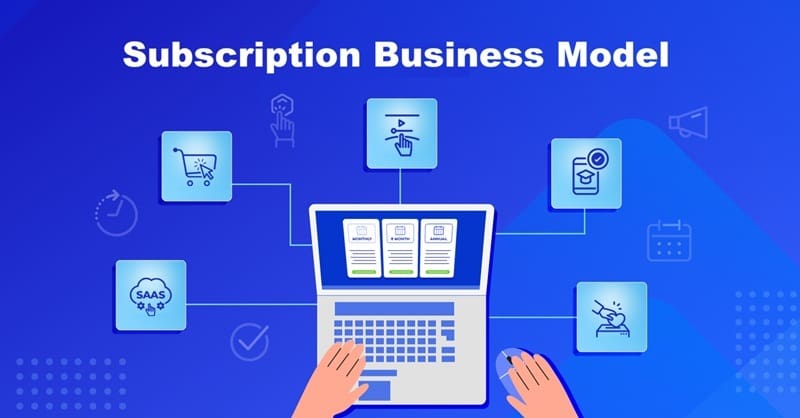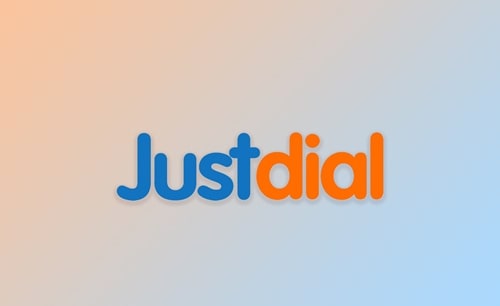In the digital era, where companies want to increase their revenue and customers want the best value, the subscription model has gained massive popularity. Businesses know that customer loyalty is the real estate in today’s time, but it is difficult to get the best of both worlds without compromising on revenue. So, the subscription model is a lot more helpful to attain a steady flow of income while continuing to introduce new features, products, or services to get more customers.
Most people think that the subscription business model is only helpful to businesses, not customers, but that’s not completely true. You may wonder how? The subscription model allows customers to avoid paying a heavy price for the complete software in one go. Instead, customers have the option to get a trial plan in a subscription model, which can help them use the program and compare if this fulfills their requirements or not.
What is a Subscription Business Model?

Subscription business model is a business strategy where companies offer their product or services for a specified period at a recurring cost instead of selling the rights for a lifetime. In the subscription model, companies provide the option to buy a weekly, monthly, quarterly, or annual subscription. By this method, companies can focus on improving the product and giving the same benefits at the pre-decided recurring price. So, this becomes a win-win situation for businesses and customers.
The most popular subscription model is easy to find with digital content, software, and physical goods. Subscription model works best if the product is really good and customers want to continue building the relationship, instead of buying the product one time.
Example of Subscription Business Models
It is easy to find subscription business models in every industry these days. There are many companies that are offering a subscription business model for video streaming services, music streaming, computer software, and so on. Below are some popular options:
1. Netflix
Netflix is a popular streaming platform for movies, TV shows, and series that you can watch on your desired device. The benefit of Netflix is a huge library of TV shows and movies at your fingertips for a small price.
2. Microsoft 365
Microsoft 365 is a subscription plan to use Word, Excel, and PowerPoint with regular updates. These products are called SaaS programs. Microsoft offers its program for a one-time purchase, as well as a subscription business model, along with a freemium option for web users.
3. Spotify
Spotify is a music streaming platform working on the subscription business model. You get the huge library to use for a small fee, meanwhile avoiding the purchase of every song for a fixed price.
4. Adobe Creative Cloud
Adobe Creative Cloud is one of the most popular subscription services designed for professional photographers, artists, and many more people. Adobe products are usually considered expensive, but with the subscription model and free trials, customers can get all the features for a small price.
5. YouTube
YouTube is a popular video streaming platform that allows anyone to upload videos and earn revenue through the views they generate. YouTube shows ads before videos, and to remove ads, customers can buy a subscription plan every month.
Advantages of the Subscription Business Model
Subscription business model offers various advantages, whether we talk about the business or the customers. Let’s take a broad look at the key advantages:
1. Predictable Revenue
With recurring payments, Businesses can expect a steady stream with a predictable cash flow. With a subscription model, businesses can plan better to increase their revenue and use their resources efficiently.
2. Customer Loyalty
If the product is top-notch and fulfills users’ intent, then customer loyalty is easy to expect. This phenomenon is easy to notice with software subscription, where customers find it difficult to switch to a new program, thus they are subconsciously bound to using the same tool for a long time.
3. Better Customer Insight
With the subscription business model, businesses can track various parameters like usage patterns, preferences, and feedback over a long time from every user. This collected data helps in improving their product and to market their product based on what features are used the most.
4. Convenient for the Customer
The subscription model, which lets customers get the latest updates without paying any extra fees, is a remarkable advantage. Meanwhile, customers also get the convenience of ending the subscription plan if it is not in use for a specific period.
Disadvantages of the Subscription Business Model
The subscription business model is mostly beneficial to both the customer and the business. However, there are some letdowns as well:
1. Customer Retention Challenge
Businesses have to ensure that their product is unbeatable and offers the best service at a reasonable price point. If the product is buggy or has any flaws, retaining the customer is the biggest challenge.
2. Subscription Fatigue
Due to an increase in the adoption of the subscription business model, customers find it difficult to manage expenses. This is the biggest issue, and it is termed as subscription fatigue. Due to this reason, customers cut down on many subscription plans and only choose those they truly need in everyday life.
3. Upfront Cost
To businesses, the upfront cost of creating the software is high, and a recurring business model takes time to sustain. So, businesses may have a difficult time in the early stage if finances are not up to mark.
4. Churn Rate
Dealing with the cancellation of subscriptions can cost a significant amount to companies, affecting their stability. A small number of subscription cancellations is common with SaaS companies, and to reduce churn, businesses have to invest in marketing to new users for business stability.
Final Words
Subscription Business Model has revolutionized the world and the relationship between businesses and customers. Businesses have to deal with complex mechanisms to keep increasing their revenue, whereas customers get to use the product for a small fee to ensure the right purchase.
Companies can find success with a subscription business model if they understand what customers want and how to keep customers coming back. In the end, when done right, a subscription model can be a win-win for both sides.



